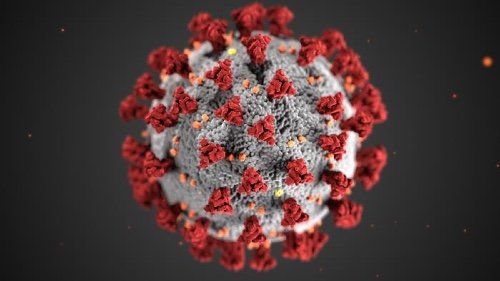COVID-19 Stability Varies Based on Imaging Equipment Surface
Study finds virus lifespan depends on the type of material used for the contaminated surface.

As radiology departments nationwide are continuously cleaning CT scanners and other equipment used to treat patients with suspected COVID19 infection, new research released Tuesday indicates the virus can remain stable on different surfaces for varying amounts of time.
A new study, published in the New England Journal of Medicine, researchers from the National Institutes of Health, Centers for Disease Control and Prevention, the University of California at Los Angeles, and Princeton University determined the virus that causes COVID19 is stable in aerosols and on surfaces for several hours to days.
“The results provide key information about the stability of SARS-CoV-2, which causes COVID19 disease, and suggests that people may acquire the virus through the air and after touching contaminated objects,” according to a press release issued by the NIH.
This variability in time can impact the many types of surfaces used in imaging equipment differently, making decontamination efforts even more important.
According to the study results, SARS-CoV-2 stays stable for up to:
- 3 hours in aerosols
- 4 hours on copper
- 24 hours on cardboard
- 2-to-3 days on plastic
- 2-to-3 days on stainless steel
Related Content: Disinfecting Imaging Equipment During COVID19 Outbreak
The study compared how the environment affects SARS-CoV-2 and SARS-CoV-1, the virus that caused the SARS epidemic in 2002 and 2003. Researchers mimicked the many ways the virus could end up on surfaces in a hospital setting, such as coughing or touching objects. Based on the stability of the virus, they determined infected individuals could be spreading it either without – or before – recognizing symptoms.
Consequently, the ease of transmission and the virus’s stability in aerosols and on surfaces, underscores the critical nature of thoroughly cleaning imaging equipment that come in contact with any patient suspected of COVID19 exposure.
Study with CT Data Suggests Women with PE Have More Than Triple the One-Year Mortality Rate than Men
April 3rd 2025After a multivariable assessment including age and comorbidities, women with pulmonary embolism (PE) had a 48 percent higher risk of one-year mortality than men with PE, according to a new study involving over 33,000 patients.
The Reading Room: Racial and Ethnic Minorities, Cancer Screenings, and COVID-19
November 3rd 2020In this podcast episode, Dr. Shalom Kalnicki, from Montefiore and Albert Einstein College of Medicine, discusses the disparities minority patients face with cancer screenings and what can be done to increase access during the pandemic.
Predicting Diabetes on CT Scans: What New Research Reveals with Pancreatic Imaging Biomarkers
March 25th 2025Attenuation-based biomarkers on computed tomography (CT) scans demonstrated a 93 percent interclass correlation coefficient (ICC) agreement across three pancreatic segmentation algorithms for predicting diabetes, according to a study involving over 9,700 patients.
Can Photon-Counting CT be an Alternative to MRI for Assessing Liver Fat Fraction?
March 21st 2025Photon-counting CT fat fraction evaluation offered a maximum sensitivity of 81 percent for detecting steatosis and had a 91 percent ICC agreement with MRI proton density fat fraction assessment, according to new prospective research.